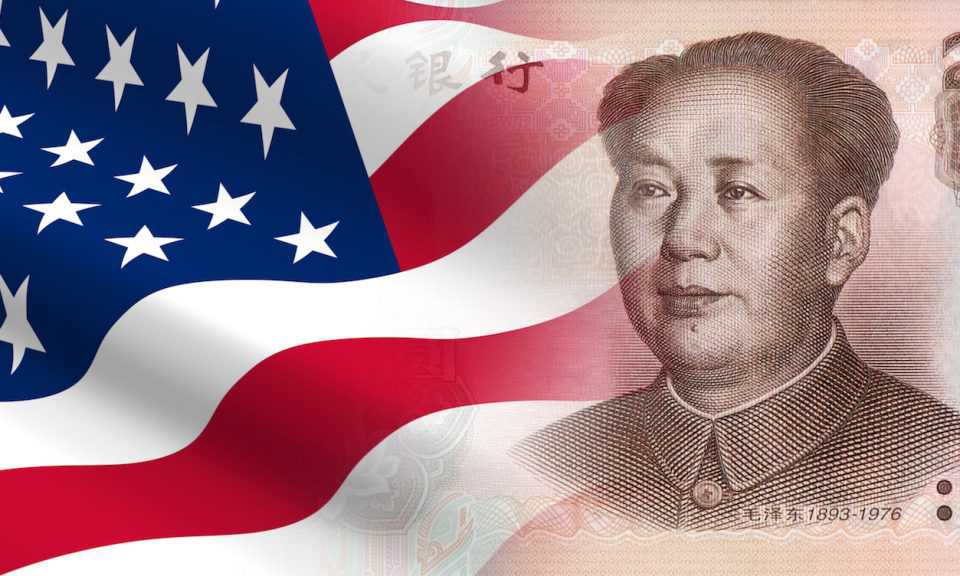Low-key Washington talks unlikely to end US-China trade war
16 August, 2018

Low-key is probably an apt description of the planned trade talks between China and the United States in Washington later this month. But the ramifications, of course, are immense.
Whether the White House and President Xi Jinping’s administration can thrash out a deal in the short term is debatable as the conflict strikes at the very heart of the world’s second-largest economy.
For the US and in part the European Union, Beijing has simply manipulated, and at times shredded, the Word Trade Organization rulebook. The slow pace of opening up the domestic economy has resulted in what the EU Chamber of Commerce in China succinctly summed up as “promise fatigue.”
But that is just one chunk of President Donald Trump’s beef. In short, this trade war is about China’s economic policy.
“[The case for China being] willing to give enough concessions that the US government backs down is not convincing,” Louis Kuijs, the head of Asia economics at research and consultancy Oxford Economics, wrote in a note to clients.
Resolving these issues would force Beijing to rip up a development model which has made the country rich and helped the ruling Communist Party retain its grip on power.
Indeed, this great wall will loom large in the background when Vice-Minister of Commerce Wang Shouwen and his team hold discussions with US representatives led by Under Secretary of the Treasury for International Affairs David Malpass.
‘Welcomes dialogue’
“China welcomes dialogue and communication on the basis of reciprocity, equality, and integrity,” China’s Ministry of Commerce said in a short statement. “[But] China reiterates that it opposes unilateralism and protectionism practices and does not accept any unilateral restriction measures.”
While the invitation came from the US, four previous rounds of talks have failed to end trade tensions, which have escalated in the past three months.
Back in June, US Commerce Secretary Wilbur Ross came away empty-handed following his trip to Beijing. But that meeting was overshadowed by the White House’s announcement just days earlier to impose 25% duties on Chinese imports worth $50 billion.
In response, Beijing threatened to retaliate before the first wave of tit-for-tat tariffs by the US and China were rolled out on July 6. Each side slapped on duties worth $34 billion.
Another round of tariffs is due on products totaling $16 billion on Aug. 23, which could be one reason why the Washington talks have been penciled in.
On the horizon, Trump has warned he is ready to turn the screw again by targeting more Chinese imports worth $200 billion. All this comes at a time when the US trade deficit with its main economic rival continues to grow.
Although it dipped slightly last month to $28.09 billion, it did come off the back of a record $28.97 billion in June. Last year, the deficit was an eye-watering $375.2 billion.
Still, Beijing has problems at home. The economy is showing signs of cooling while Xi has come under fire from liberal-minded academics and economists for the state’s suffocating intrusion into every aspect of life in the country.
“As material benefits become increasingly widespread, Chinese society is moving into an era in which issues of meaning and value will come to the fore and demand something more than simple economic solutions,” Kerry Brown, a professor of Chinese Studies and the director of the Lau China Institute at King’s College in London, said.
The Communist Party’s tentacles are already firmly embedded in the economy. Allegations of “forced technology transfers” are common when it comes to doing business in the country while the state-owned enterprise sector has gorged on government cash for years.
Belated reforms
Despite belated reforms in the industry, these SOE giants have been slow to reduce excess capacity. “Surplus Chinese steel exceeded the entire combined output of France and Germany last year,” Bloomberg reported.
Significantly, this ends up being dumped on the global market at rock bottom prices, an accusation that is hard to dispute.
Yet slowly, China is moving away from “high-speed growth” to “high-quality growth,” fueled by the “Made in China 2025” high-tech program, which is also on Trump’s hit list.
“The current trade war between the United States and China is not about trade,” Yukon Huang, a senior fellow at the Carnegie Endowment and author of Cracking the China Conundrum: Why Conventional Economic Wisdom Is Wrong, wrote in an opinion piece for Caixin.
“This war is about protecting the technological edge that has made the United States the world’s dominant economic power,” the former World Bank director for China added on the Beijing-based media group’s website.
Dealing with that conundrum will take more than low-level talks in Washington.
TAG(s):
